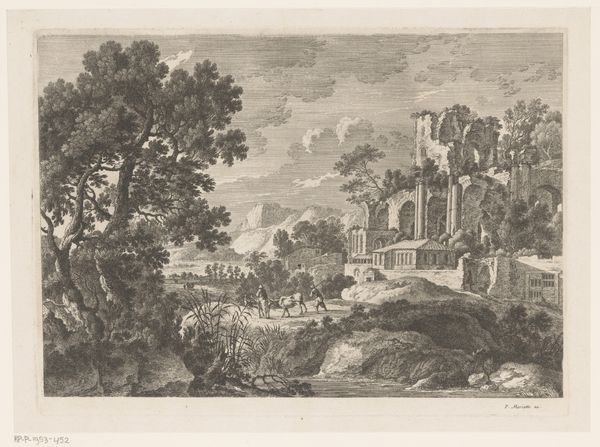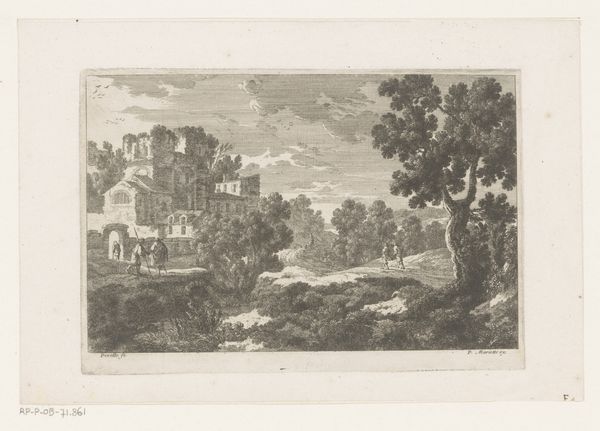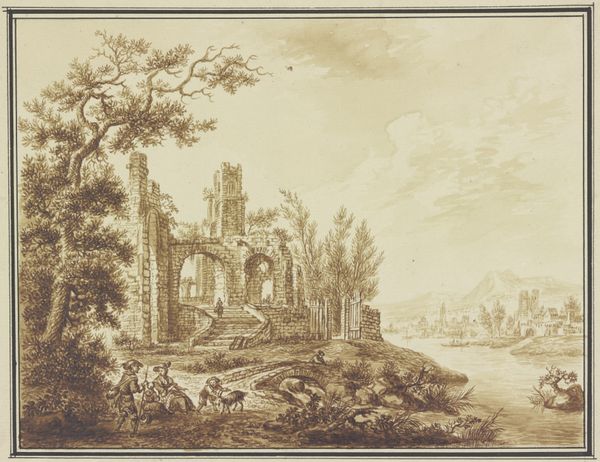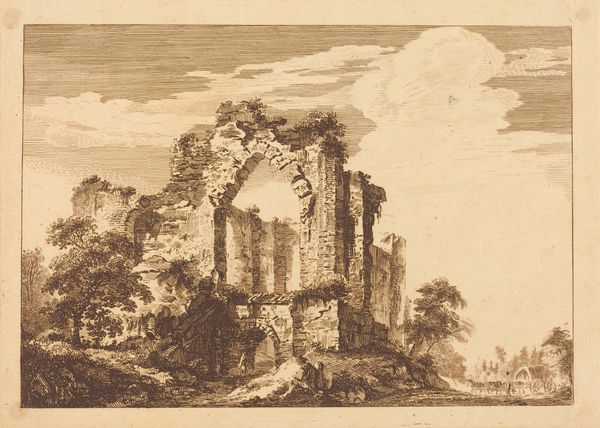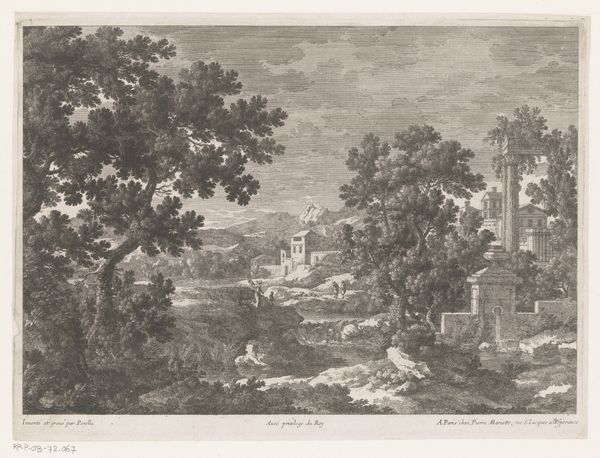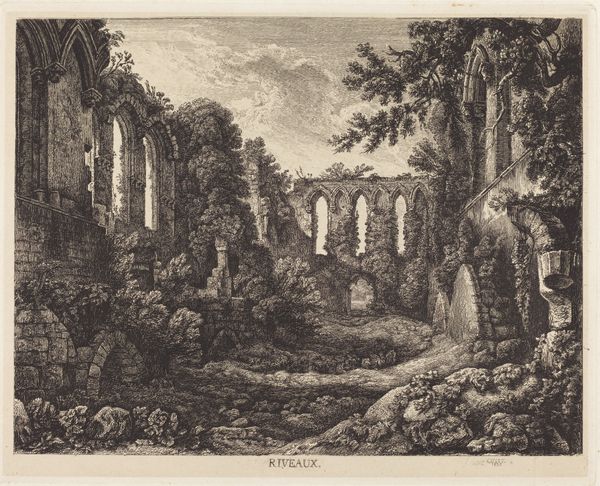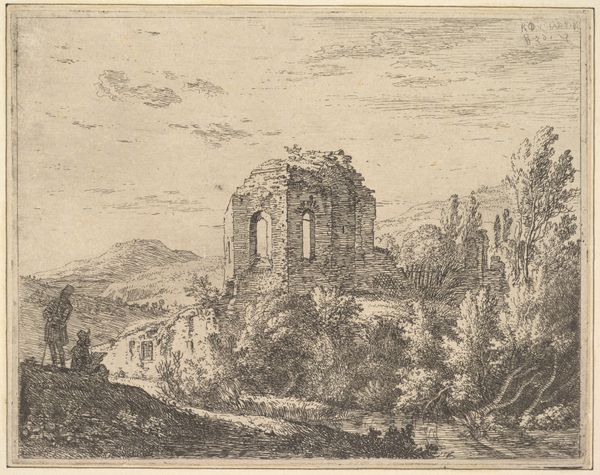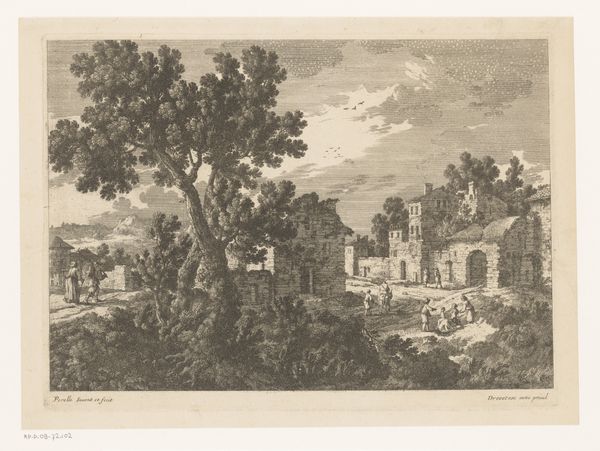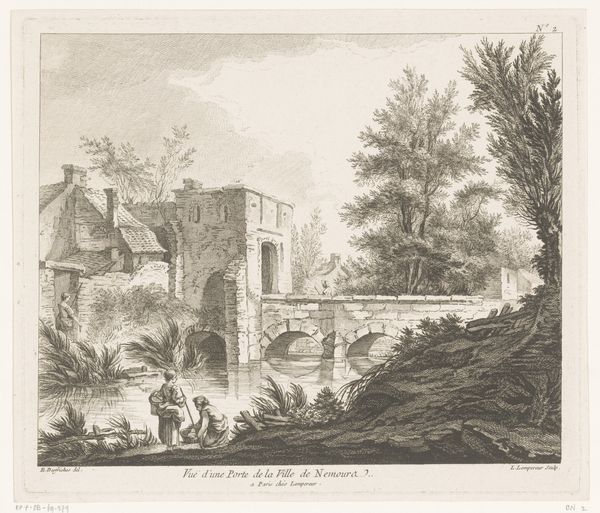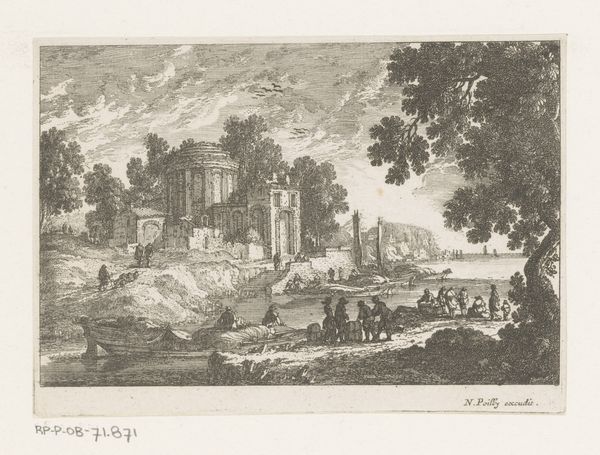
print, etching
#
baroque
# print
#
etching
#
landscape
#
etching
#
history-painting
Dimensions: height 110 mm, width 169 mm
Copyright: Rijks Museum: Open Domain
Curator: This etching, created by Adam Perelle between 1648 and 1695, is titled "Landschap met vier figuren voor ruïne"—Landscape with four figures before a ruin. Editor: A somewhat somber first impression, actually. The stark lines of the etching highlight the ruin, yes, but also a certain temporal decay and the weight of history pressing down on these figures. Curator: Indeed, Perelle’s technique masterfully uses line to construct depth. Notice how the foreground's dense hatching contrasts with the lighter touch in the distant landscape. The ruined structure itself, rigidly architectural in its partial form, functions as a strong visual anchor. Editor: These ruins, the fractured edifice juxtaposed against a serene landscape… I see echoes of the crumbling Roman Empire. The figures appear almost like pilgrims or refugees, drawn to the symbolic gravity of the place, burdened by a sense of what's lost. Do you find evidence of this? Curator: That is one plausible reading, though such narratives can be difficult to concretely establish. We could also interpret the architectural forms as geometric studies in themselves, devoid of any specific historical meaning. Their degradation then serves merely to accentuate the interplay of shadow and light. Editor: But what of the careful inclusion of four figures, though? Such intentional figuration indicates symbolism and suggests the passage of time. Do you not feel it calls to a specific historical context beyond mere aesthetic representation? Curator: Perhaps, though the composition is structured very self-consciously. Note how they guide the eye into and through the structure, linking background and middle ground, giving volume. This to me speaks of his interest in exploring spatial relationships through form rather than a heavy emphasis on imbuing figures with narrative intent. Editor: I can see that. However, to dismiss the iconographic value of these motifs might miss out on grasping the piece's cultural depth and understanding. The image prompts consideration of our own time and place in historical change and continuity. It certainly affects how I think about civilization. Curator: And for me, it reinforces the power of structure, composition, and line to communicate a sense of time and history within a primarily visual language. Editor: Precisely; that structural harmony enhances the artwork's potent meditation on history's weight and legacy.
Comments
No comments
Be the first to comment and join the conversation on the ultimate creative platform.
